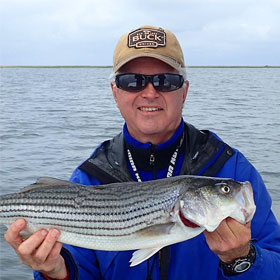What To Know About Required and Optional Boating Safety Equipment
By Ken Schultz
Jun 07, 2019
Here’s a review of the required and optional boating safety equipment you should have onboard your boat or paddlecraft to enjoy a safe day of boating.
Right after most boating anglers get their fishing license or renew their boat registration, they think about where to go, what to use, and how to catch fish. Thinking about boating safety equipment, however, should be the best first order of business. There are boating safety equipment requirements that you must adhere to, as well as some safe boating equipment that it would be wise to have.
Required Boating Safety Equipment:
Life Jackets (PFDs)
The U. S. Coast Guard (USCG) requires that all recreational vessels carry one wearable life jacket (also called a personal flotation device or PFD) for each person onboard. The life jackets must be “U. S. Coast Guard-approved, in good and serviceable condition, of appropriate size and type for the intended user, and properly stowed.” Any boat 16 feet or longer must also carry one throwable (Type IV) flotation device.
The USCG has very specific language about what constitutes proper stowage, about how life jackets are categorized, what activities may be exempt from normal requirements, and how life jackets are properly sized.
Also, the USCG requires that “on a vessel that is underway, children under 13 years of age must wear an appropriate U. S. Coast Guard-approved life jacket unless they are 1) below deck, or 2) within an enclosed cabin. If a state has established a child life jacket wear requirement that differs from the Coast Guard requirement, the state requirement will be applicable on waters subject to that state’s jurisdiction.
Visual Distress Signals
Since all boaters should be able to signal for help, USCG-approved visual distress signals are required on “all vessels operating on U. S. coastal waters, the Great Lakes, and territorial seas, as well as those waters connected directly, up to a point where the waterway is less than two nautical miles wide.” They can be pyrotechnic (like flares) or non-pyrotechnic (a flag for day use and electric signal for night use). Certain vessels, including those under 16 feet, are exempt from this boating safety equipment requirement.
Sound Devices
Large vessels are required to have a means of producing sound for navigational purposes, and during reduced visibility or while at anchor. A horn, bell, or whistle are suitable. Though not required, it’s a great idea for small boaters, and kayakers in particular, to keep a whistle tethered to their PFD.
Fire Extinguishers
USCG-approved marine fire extinguisher is also required on certain vessels. The Coast Guard specifies certain boat conditions requiring this, but since they include any vessel that has a permanently installed (or otherwise unmovable) fuel tank, it means that a fire extinguisher is required on a large number of boats. Vessels over 26 feet in length require multiple extinguishers.
Navigation Lights
Per the USCG, “power-driven vessels are required to display navigation lights between sunset and sunrise and during periods of restricted visibility.” Vessels under 39.4 feet (12 meters) must display a white stern light and red-and-white bow lights (red on port, green on starboard). Different requirements exist for non-powered vessels. Among the latter, a rowboat, canoe, or kayak, should exhibit a white stern light, or be able to produce a white light (such as from a flashlight, preferably waterproof) “in sufficient time to prevent a collision.
Optional Boating Safety Equipment:
VHF Radio
Since a cellphone has limited range away from shore, it cannot be relied upon to transmit a distress call. To transmit an emergency call for help, as well as get current weather information and navigational notices, a fixed or portable VHF radio is an important component of boating safety. Channel 16 is monitored by the Coast Guard, and is used for distress calls.
Anchor and Line
Anchoring may be necessary for some fishing activities, but it may be crucial in case of engine failure. In this respect, having an anchor and a good amount of anchor line, is a safety item.
Extra Dock Lines
It’s a good idea to have extra dock lines on your boat in case you need to tow another boater or encounter a difficult mooring or docking situation.
First Aid Kit
You can purchase a fully stocked first aid kit or assemble your own, but make sure it includes assorted bandages, gauze, an elastic wrap with clips, antibiotic ointment, sterile dressing pads, antiseptic cleansing wipes, etc. I’ve used my boat kit twice in the past eight months, and keep it in a watertight container.
And Also… You might argue that having a navigational chart, and/or a compass, onboard is a safety item, as is having an oar or paddle, as is having good raingear (to keep you warm, dry, and comfortable).
When you take a mandatory boating safety course, you’ll learn about what to do in the event of capsizing or cold-water immersion, and what to do when severe weather arises and causes safety concerns. Make sure that you have the boating safety equipment discussed here, and that you adhere to your state, as well as federal, requirements.









